“I like their Hobby”. This was said in dutch. The Hobby was a caravan arriving around supper time at our campground. That sentence says a lot. There are a lot of Dutch people around on French campgrounds at this time of the year. That observance doesn’t resonate with the fact what Dutch newspapers, including FD, screamed that the Netherlands is in the same league of economic despair as Greece and Portugal. Of course this is nonsense, we all know it’s nonsense, but it still makes a good headline, and that’s why we publish. When common sense has disappeared from the headlines, end your subscription.
Talking about hobbies. I was sitting outside of Pontigny Abbey today, about 6 pm, a lovely sunny evening, drawing a picture of the abbey, or at least attempting to draw. There was a nice couple passing by, saying a friendly bonsoir. After a while they returned on their way and wanted to see what I was drawing. They invited themselves to a view of my drawing, an invitation which included a streaming wave of good sounding french sentences that I did not comprehend.
Non, je ne suis pas an artiste, c’est le premier fois, ma fille, la bas, elle est plus interessante. Those kind of things. They left with sounds like tres bien,but they knew better and a little bit down the road they had a good laugh, as they should have when you do not really value the difference between aspirattion and pretention.
Well, this was the abbey of Pontigny. The second abbey that was founded by the Cistercians from Citeaux, even before Clairvaux, although there was only one year in between (1114-1115). Pontigny is fascinating in many ways. One of the things is that it really is build on the edge of the romanesq and the gothic world.
It is easy to see in the windows. The rounded windows of the romanesq world give way for the pointed windows of the gothic world. One way to look at this is, ok it is a different shape, but the more fascinating view is that this has been created by new building techniques.
I wrote earlier about the flying buttresses, which are still very primitive in Pontigny, as well as in Sens, where we were yesterday.
Another fascinating new building technique is in the roofs. At Pontigny they have groined vaults and ribbed vaults. I will show pictures of what I mean. These are both improvements of what is the barrelled vault that is used in, for example, Vezelay, where we will be visiting in the coming days. It all helped to make a building bigger and more impressive. I do believe, with mr Schumacher, that Small is Beautiful, but history is against us in this opinion.
Bernard of Clairvaux will have his own grunts against this building. He professed the most sincere austerity in buildings. In Pontigny you do find the completely superflicious five ribbed vault, where only four are really needed. The fifth one is ‘for aesthetic reasons’. Bernard must have been turning around in his grave when he heard about this.
Pontigny is a funny building though. Used now as a parish church, a good part of the old abbey is ruined by some kind of 18th (or 17th, or 19th) century kind of interpretation of what a choir in a church should look like. I ignored it till I found out that the relics of St Edmund were hidden there. They are in an enormous box, lifted up by four shapely angels. Which made me wonder why there could ever be an english town called Bury St Edmund. I mean, there is nothing to bury there, having his whole body here in Pontigny.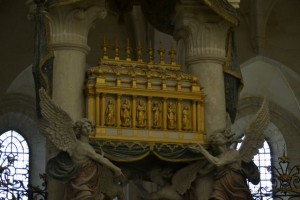
Pontigny is interesting for many other reasons. Because of the money of some great French man, Paul Desjardins, dozens of writers, including Andre Gide, TS Eliot and Raymond Aron were able to stay in residence here and wrote some great works. The hospitality of Pontigny is without doubt. Three archbishops of Canterbury, including Thomas Beckett stayed here when they got into trouble with the King of England. Those kinds of troubles were solved when Henry VIII made himself ruler of the church. One wonders though, how a country, like England, could call itself modern, or even -up to date- when its doesn’t even have managed to arrange itself for that most Western and most elementary division of powers, those between church and state.

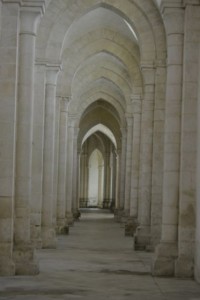
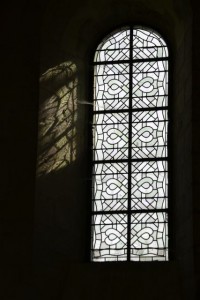
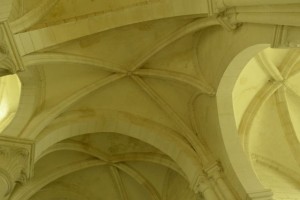
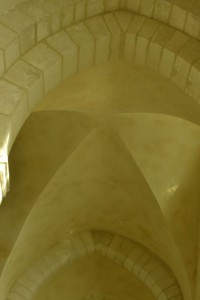

Mary says
loving this.
Nikki says
Cool architecture.